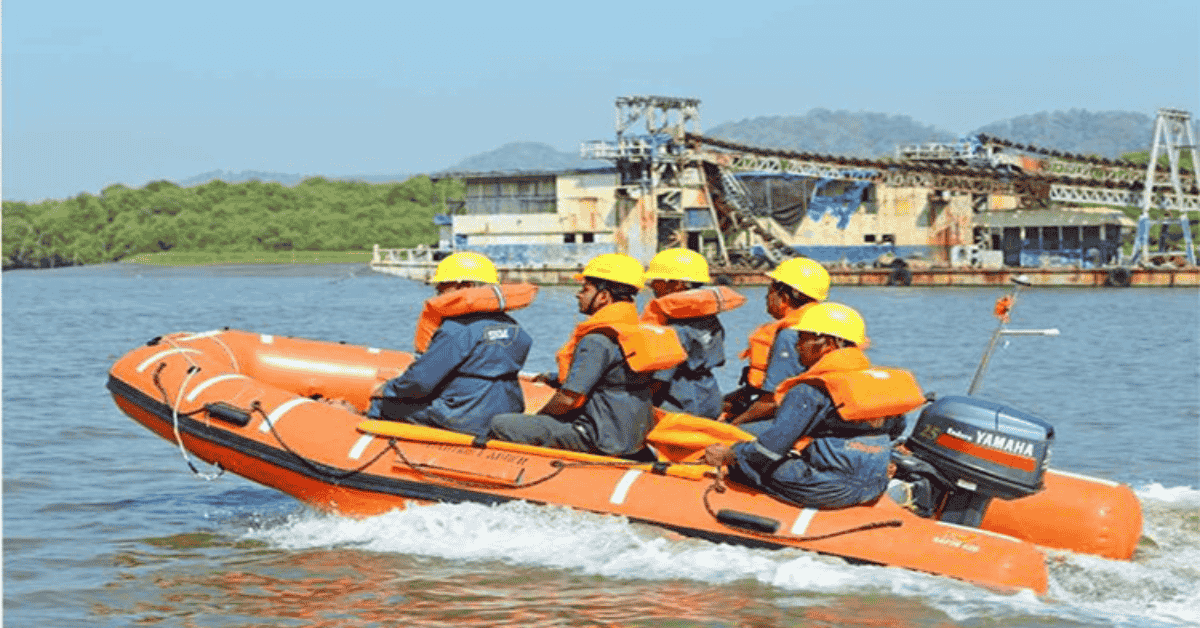Inflatable Rescue Boats: A Comprehensive Guide to Their Uses, Advantages, and Future Trends
1. Introduction
1.1 Importance of Inflatable Rescue Boats in Emergency Situations
Inflatable rescue boats (IRBs) are crucial tools in emergency response operations, providing rapid deployment in critical situations such as floods, water rescues, and natural disasters. Their lightweight yet durable design makes them indispensable for saving lives in unpredictable conditions.
1.2 Overview of the Article
This article explores the functionality, advantages, and diverse applications of inflatable rescue boats. We’ll discuss their structure, benefits, safety considerations, and future trends to provide a well-rounded understanding of these essential emergency tools.
2. What is an Inflatable Rescue Boat?
2.1 Definition and Key Features
An inflatable rescue boat is a lightweight, portable, and buoyant boat designed for rescue and relief operations, usually equipped with a motor for rapid deployment. These boats are characterized by their inflatable tubes, which provide stability and buoyancy.
2.2 Types of Inflatable Rescue Boats
Inflatable rescue boats vary in size and purpose, ranging from smaller manually operated models to larger, motorized versions for extensive rescue missions. Common types include rigid inflatable boats (RIBs) and soft-bottom inflatables.
3. How Inflatable Rescue Boats Work
3.1 Structure and Design
Inflatable rescue boats are designed with multiple air chambers, ensuring that even if one chamber is punctured, the boat remains afloat. The design is focused on maximizing stability and maneuverability in rough waters.
3.2 Materials Used
Typically made from reinforced PVC or Hypalon, the materials used in IRBs are resistant to punctures, abrasions, and UV damage. These materials ensure durability in harsh rescue environments.
3.3 Propulsion Mechanisms
Most IRBs are powered by outboard motors, though smaller models may rely on manual paddling. The motorized options allow for swift movement through strong currents and flooded areas.
4. Advantages of Inflatable Rescue Boats
4.1 Portability and Ease of Deployment
One of the primary advantages of IRBs is their portability. They can be easily inflated and deployed from land or water within minutes, making them ideal for time-sensitive rescue missions.
4.2 Versatility in Different Environments
IRBs are effective in various environments, including lakes, rivers, and coastal waters. Their stability makes them suitable for navigating rough seas or shallow floodwaters.
Read Also – https://palpalnewspro.com/best-inflatable-rental-software-solutions/
Read Also – https://palpalnewspro.com/stunning-holiday-dresses/
4.3 Cost-Effectiveness
Compared to traditional rescue vessels, inflatable boats are more affordable to purchase and maintain. Their cost-effectiveness, combined with efficiency, makes them a popular choice for emergency services worldwide.
5. Applications of Inflatable Rescue Boats
5.1 Marine Rescue Operations
Inflatable rescue boats play a vital role in marine rescue missions, allowing coast guards and rescue teams to respond swiftly to maritime emergencies.
5.2 Flood and Disaster Relief
In flood scenarios, IRBs are indispensable for evacuating stranded individuals and delivering supplies to hard-to-reach areas. Their ability to navigate shallow waters is crucial in disaster zones.
5.3 Recreational Use
While primarily used for rescue, inflatable boats also serve recreational purposes, such as fishing or water sports, demonstrating their versatility beyond emergency use.
6. Key Components of Inflatable Rescue Boats
6.1 Hull and Tubes
The hull and inflatable tubes provide buoyancy and stability. The boat’s floor may be rigid or inflatable, depending on the model.
6.2 Engine and Propulsion
The engine, typically an outboard motor, is a critical component for speed and maneuverability, particularly in challenging rescue environments.
6.3 Safety Features and Equipment
Standard IRBs come equipped with essential safety features such as life jackets, first-aid kits, and emergency flares, ensuring the safety of both rescuers and victims.
7. Maintenance and Care
7.1 Regular Inspection and Cleaning
Proper maintenance is vital to the longevity of an inflatable rescue boat. Regular inspections for punctures, wear, and tear, combined with routine cleaning, help maintain its effectiveness.
7.2 Storage Guidelines
When not in use, IRBs should be stored in a cool, dry place to prevent damage from UV rays or extreme temperatures. Proper deflation and storage are key to extending their lifespan.
7.3 Repairing Damages
Minor punctures can be repaired using patch kits, while more significant damages may require professional repairs to ensure the boat remains seaworthy.
8. Safety Considerations
8.1 Certification and Compliance
Operators should ensure that their inflatable rescue boats meet all necessary safety certifications and comply with local regulations to guarantee reliability in emergency situations.
8.2 Safe Operating Procedures
Proper training is essential for safely operating an IRB. This includes understanding load limits, handling the boat in rough waters, and knowing how to deploy it quickly.
8.3 Training for Operators
Rescue teams should undergo comprehensive training on how to handle the boats in different conditions, ensuring efficient operation during emergencies.
9. Future Trends in Inflatable Rescue Boats
9.1 Technological Advancements
Future developments in inflatable boat technology focus on lighter, more durable materials and enhanced propulsion systems for faster, more efficient rescues.
9.2 Environmental Sustainability
Eco-friendly materials and engines with reduced emissions are becoming a focus in IRB development, aligning with global sustainability goals.
9.3 Future Innovations in Design and Materials
Research into more durable, puncture-resistant materials will enhance the resilience of inflatable rescue boats in the future, improving their performance in extreme conditions.
10. Case Studies and Expert Insights
10.1 Real-Life Rescue Operations Using Inflatable Boats
A recent example of IRB effectiveness occurred during the 2022 floods in South Asia, where rescue teams used inflatable boats to evacuate thousands of people stranded in flooded areas.
10.2 Insights from Rescue Experts
Rescue experts emphasize the importance of having well-maintained, properly equipped inflatable boats, noting that speed and agility are critical in life-saving operations.
11. Conclusion
11.1 Summary of Key Points
Inflatable rescue boats are vital tools in emergency operations, offering portability, versatility, and cost-effectiveness. Their role in saving lives during disasters cannot be overstated.
11.2 Final Thoughts and Call to Action
As technology advances and environmental concerns grow, the development of more efficient, sustainable inflatable rescue boats will continue to be a priority. For those involved in rescue operations, investing in quality IRBs is essential.



